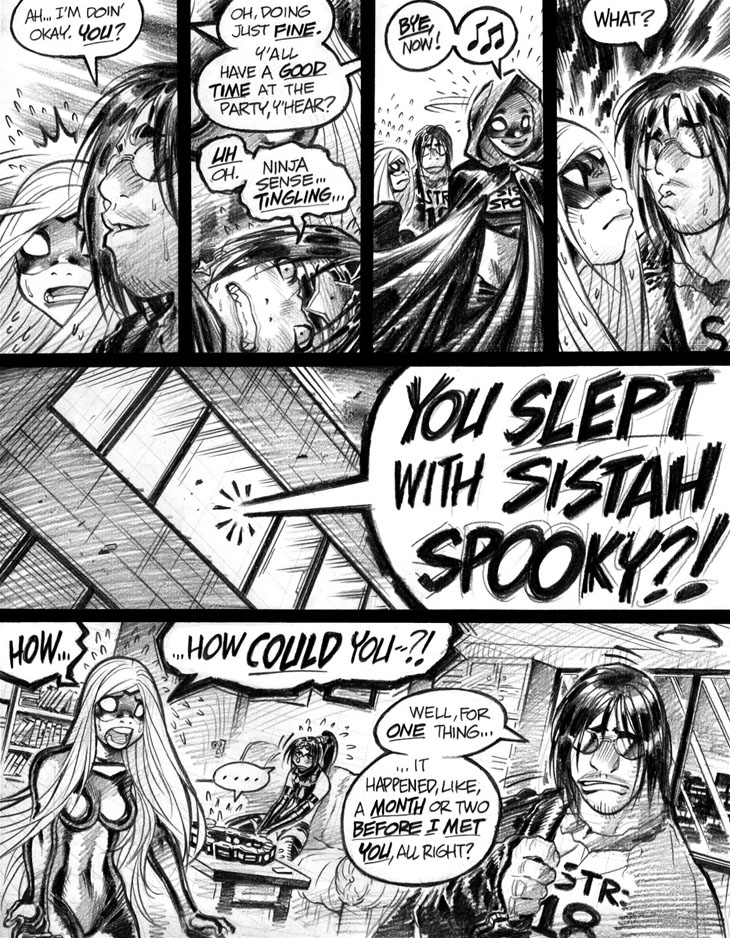Panel 5 features a rare “exterior establishing shot” of Emp’s apartment, drawn in an effort to smooth the narrative transition between settings. This type of shot appears in Empowered only infrequently because I’ve come to appreciate and embrace the value of sudden, abrupt cuts between scenes, without the transitional aid of panels like this. Beyond the brisk, sharp “snap” that abrupt cuts provide on a storytelling level, they also save me plenty of pagecount in the process; the more gradual and stately scene changes I once used in the first few Dirty Pair miniseries consumed considerably more space and time.
In retrospect, I’m reasonably sure that my earliest use of sudden “jump cuts” can be traced back to a single moment: namely, the first issue of the (long out of print) 1994 miniseries Bubblegum Crisis: Grand Mal, which kicked off a new story set in the old-school anime’s world. Within issue #1’s 24 pages, I faced the daunting task of (re)establishing BGC’s rather convoluted backstory and existing cast of characters while simultaneously bringing in new antagonists and rolling out the project’s storyline, preferably without resorting to boring slabs of raw, indigestible exposition. So, out of sheer desperation, I worked up a narrative scheme in which a present-tense, action-heavy storyline would be broken up by seemingly random bursts of brief “audio and video samples” hastily sketching in the Bubblegum Crisis background and characters. (The “audio samples” ran as captions over the present-tense panels, while the “video samples” were presented as entire flashback panels on their own.) The punchline, by the way, was that the audio and video samples weren’t a narrative device as such, but were actually excerpts of surveillance and background intel gathered by a hostile mecha hunting the Knight Sabers.
So, in the course of Grand Mal #1’s 24 densely story-packed pages, I had to get over my apparent aversion to sudden cuts in a hurry. In fact, over the course of the miniseries, I came to positively adore the abrupt jump cut, and afterward started using it in the next few Dirty Pair miniseries—and in all of my comics projects ever since, including this one. Looking back, while my dalliance with Bubblegum Crisis might be viewed as a bit of a dead end—the complicated rights situation precluded any sequel projects—the miniseries was nonetheless hugely valuable to me as a creator, thanks to all the things I learned in the process of making it.
To close out my nostalgic tongue-bath of Bubblegum Crisis: Grand Mal, I should note that, while I’ve used most of the project’s desperately improvised narrative tricks and techniques elsewhere, I’ve never quite dared to deploy the entirety of Grand Mal’s storytelling toolkit at once. I’ve probably assumed that going “full-on Mal” might be a bit off-putting for casual readers—but perhaps I might reconsider that pusillanimous hesitation with a future project. (Or perhaps not.)
-Adam Warren

